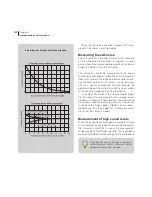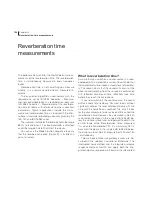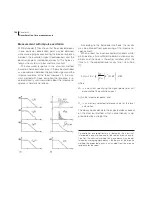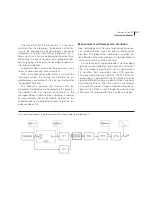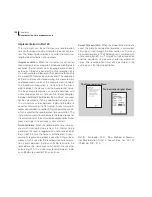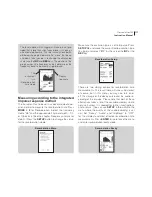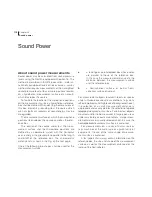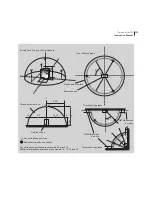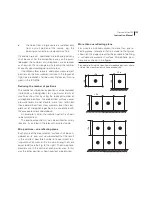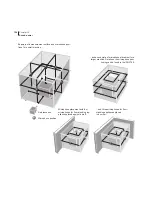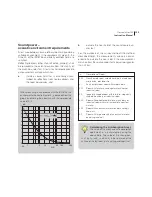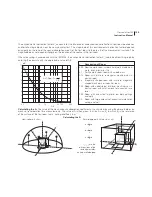
114
Chapter 22
Reverberation time measurements
Make sure the excitation type is set to Noise. Press
SETUP > 2
and move the cursor filed to excitation type
(Ex.type) and select “NOS” by the use of the
INC
or
the
DEC
key.
Set the time duration for the excitation (Ex.time:) .
The time is given in seconds. The value should be at
least equal to half the reverberation time to be meas-
ured.
In this menu there are two storing options for rever-
beration time measurements. The result table will al-
ways be stored, of course, but in this menu you may
also turn on or off the storage of the decay curve and
the audio recording of the impulse. Please note that
both of these alternatives takes a lot of the available
memory so do not use it unless it is needed for further
investigations and analysis. Set “Decay”, “Audio” and
“ImpResp” to “OFF” for the simplest and most effective
reverberation time measurements. Press
ENTER
twice
to leave the menu and enter reverberation ready mode.
The selected topscale has no influence on the
measurement in this mode of operation.
Press the
START
key. The instruments switch on the
noise for the selected excitation time and present the
W
-mark. The logging of the level starts when the noise
is switched off and the run indicator
R
is displayed.
The instrument will measure for a number of
seconds dependant on the maximum expected
reverberation time (from 5 to 40 seconds) and
count down to 0 to indicate how much is left of the
measurement. The acquired results are then pre-
sented as a table. If you are measuring very short
reverberation times you may terminate the
measurement as soon as the background noise level
has been reached by pressing
STOP
.
The calculation of the reverberation times are
automatically performed as soon as the measurement
is terminated and the values are shown in a table.
The table shows the calculated reverberation time for
each frequency band and for the spectral weighting
networks (A- and C- or Z-weighting). If the rever-
beration time measured is too short compared to the
values in the table for minimum reverberation times, a
question mark will be shown to the right of the value.
If the signal-to-noise ratio is insufficient for calculating
the reverberation time, the sign “-.-“ will be displayed
instead of a value.
Press
FUNC
for displaying T20 or T30 as appropriate.
Reverberation Table
Summary of Contents for nor140
Page 4: ......
Page 16: ......
Page 17: ...nor140 SOUND ANALYSER ...
Page 18: ......
Page 212: ...194 ...
Page 218: ......



